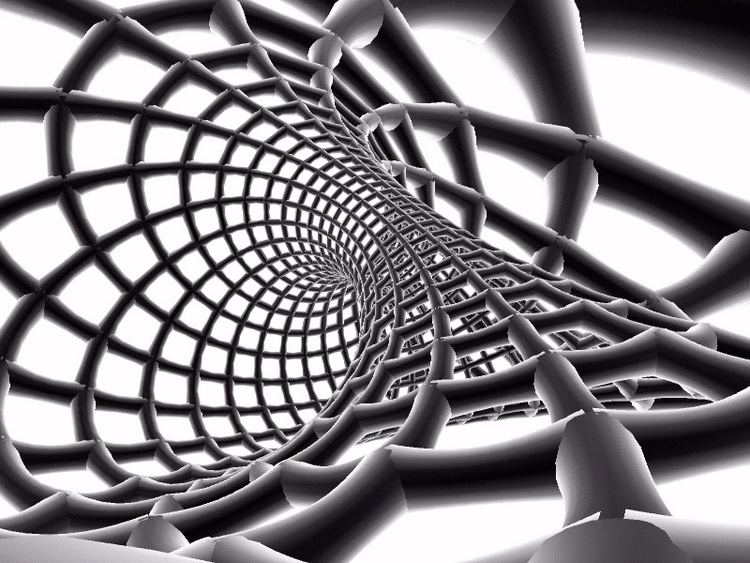 | ||
In geometry of 4 dimensions or higher, a duoprism is a polytope resulting from the Cartesian product of two polytopes, each of two dimensions or higher. The Cartesian product of an n-polytope and an m-polytope is an (n+m)-polytope, where n and m are 2 (polygon) or higher.
Contents
- Nomenclature
- Geometry of 4 dimensional duoprisms
- Perspective projections
- Orthogonal projections
- Related polytopes
- Duoantiprism
- k22 polytopes
- References
The lowest-dimensional duoprisms exist in 4-dimensional space as 4-polytopes being the Cartesian product of two polygons in 2-dimensional Euclidean space. More precisely, it is the set of points:
where P1 and P2 are the sets of the points contained in the respective polygons. Such a duoprism is convex if both bases are convex, and is bounded by prismatic cells.
Nomenclature
Four-dimensional duoprisms are considered to be prismatic 4-polytopes. A duoprism constructed from two regular polygons of the same edge length is a uniform duoprism.
A duoprism made of n-polygons and m-polygons is named by prefixing 'duoprism' with the names of the base polygons, for example: a triangular-pentagonal duoprism is the Cartesian product of a triangle and a pentagon.
An alternative, more concise way of specifying a particular duoprism is by prefixing with numbers denoting the base polygons, for example: 3,5-duoprism for the triangular-pentagonal duoprism.
Other alternative names:
The term duoprism is coined by George Olshevsky, shortened from double prism. John Horton Conway proposed a similar name proprism for product prism, a Cartesian product of two or more polytopes of dimension at least two. The duoprisms are proprisms formed from exactly two polytopes.
Geometry of 4-dimensional duoprisms
A 4-dimensional uniform duoprism is created by the product of a regular n-sided polygon and a regular m-sided polygon with the same edge length. It is bounded by n m-gonal prisms and m n-gonal prisms. For example, the Cartesian product of a triangle and a hexagon is a duoprism bounded by 6 triangular prisms and 3 hexagonal prisms.
The m-gonal prisms are attached to each other via their m-gonal faces, and form a closed loop. Similarly, the n-gonal prisms are attached to each other via their n-gonal faces, and form a second loop perpendicular to the first. These two loops are attached to each other via their square faces, and are mutually perpendicular.
As m and n approach infinity, the corresponding duoprisms approach the duocylinder. As such, duoprisms are useful as non-quadric approximations of the duocylinder.
Perspective projections
A cell-centered perspective projection makes a duoprism look like a torus, with two sets of orthogonal cells, p-gonal and q-gonal prisms.
The p-q duoprisms are identical to the q-p duoprisms, but look different in these projections because they are projected in the center of different cells.
Orthogonal projections
Vertex-centered orthogonal projections of p-p duoprisms project into [2n] symmetry for odd degrees, and [n] for even degrees. There are n vertices projected into the center. For 4,4, it represents the A3 Coxeter plane of the tesseract. The 5,5 projection is identical to the 3D rhombic triacontahedron.
Related polytopes
The regular skew polyhedron, {4,4|n}, exists in 4-space as the n2 square faces of a n-n duoprism, using all 2n2 edges and n2 vertices. The 2n n-gonal faces can be seen as removed. (skew polyhedra can be seen in the same way by a n-m duoprism, but these are not regular.)
Duoantiprism
Like the antiprisms as alternated prisms, there is a set of 4-dimensional duoantiprisms: 4-polytopes that can be created by an alternation operation applied to a duoprism. The alternated vertices create nonregular tetrahedral cells, except for the special case, the 4-4 duoprism (tesseract) which creates the uniform (and regular) 16-cell. The 16-cell is the only convex uniform duoantiprism.
The duoprisms , t0,1,2,3{p,2,q}, can be alternated into , ht0,1,2,3{p,2,q}, the "duoantiprisms", which cannot be made uniform in general. The only convex uniform solution is the trivial case of p=q=2, which is a lower symmetry construction of the tesseract , t0,1,2,3{2,2,2}, with its alternation as the 16-cell, , s{2}s{2}.
The only nonconvex uniform solution is p=5, q=5/3, ht0,1,2,3{5,2,5/3}, , constructed from 10 pentagonal antiprisms, 10 pentagrammic crossed-antiprisms, and 50 tetrahedra, known as the great duoantiprism (gudap).
k_22 polytopes
The 3-3 duoprism, -122, is first in a dimensional series of uniform polytopes, expressed by Coxeter as k22 series. The 3-3 duoprism is the vertex figure for the second, the birectified 5-simplex. The fourth figure is a Euclidean honeycomb, 222, and the final is a paracompact hyperbolic honeycomb, 322, with Coxeter group [32,2,3],
